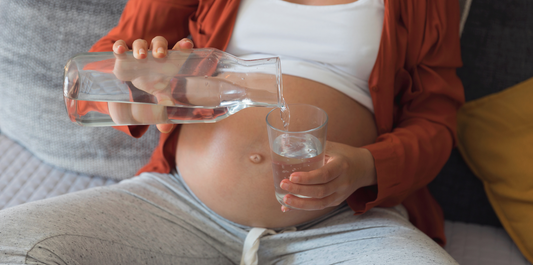Tough on the outside doesn’t mean safe on the inside
- Greater intake by body weight – a 5 kg cat typically drinks 50–60 ml of water per kilo each day (about 250–300 ml), while the average adult consumes 1.5–2 litres at 70 kg—just 21–29 ml per kilo. That means pets often take in nearly twice the amount of any contaminants per kilogram.
- No visible warning signs – liver and kidney damage tends to develop quietly. By the time symptoms like weight loss or a dull coat appear, the condition may already be advanced—and costly to treat.
- Faster ageing, faster buildup – dogs and cats live shorter lives, so the same environmental exposures add up more quickly. Today, many experts recognise that pets often show the effects of household pollutants sooner than humans—making them important early indicators of environmental risks.
Just because they tolerate tap water doesn’t mean it’s good for them—any more than we’d call ready meals a healthy long-term diet.
Five tap-water hazards that affect pets
|
Contaminant/s |
Sources |
Effects |
Evidence |
|
Heavy metals (lead, copper) |
Old pipes, brass fittings |
Neurological issues, anaemia, kidney damage |
Dogs with blood-lead up to 530 µg/100 ml showed seizures and digestive upset. |
|
PFAS (“forever chemicals”) |
Non-stick cookware, industrial run-off |
Liver enlargement, cholesterol shifts, thyroid disruption |
Studies link PFAS levels to raised liver enzymes in dogs and thyroid issues in cats. |
|
Excess fluoride |
Fluoridation, agricultural run-off |
Dental mottling, bone defects |
Merck Veterinary Manual notes skeletal and dental lesions from high-fluoride intake. |
|
Chlorine & chloramine |
Disinfection in waterworks |
Upset stomach, vomiting, skin irritation |
Even low-level chlorine can trigger vomiting and diarrhoea in sensitive pets. |
|
Microplastics (<1 mm) |
Pipe scale, bottles, household dust |
Inflammation, oxidative stress, reduced fertility |
Studies have found microplastics lodged in the kidneys and livers of household cats and dogs, triggering inflammation and oxidative stress, with some linked to reduced sperm counts in male dogs. |

Subtle warning signs that often go unnoticed
- Mild but recurring vomiting or loose stools
- A thinning or flaky coat
- Early signs of dental wear or mottling
- Increased thirst or more dilute urine (potential kidney stress)
Why bottled water and basic filters aren't good enough
- Standard carbon jugs – improve taste and reduce some chlorine, but leave behind most heavy metals, PFAS, fluoride, and microplastics.
- Single-use bottled water – quality is inconsistent; plastic may leach BPA, sodium levels can exceed those in tap water, and ongoing purchases quickly become expensive.
- Basic tap-mounted filters – useful for sediment and chlorine but often clog in hard-water areas and struggle to remove ultra-fine contaminants.
How AquaTru makes protection effortless

- 4-stage reverse osmosis – removes up to 99 % of lead, PFAS, fluoride, and over 96 % of 0.5 µm microplastics, with results independently certified by IAPMO under NSF/ANSI 42, 53, 58 & 401.
- Countertop convenience – no plumbing required. Just fill the tank, press Start, and serve pure water in a clean stainless or ceramic bowl within minutes.
- Glass or BPA/BPS-free Tritan™ tanks – prevent further contamination from plastics.
- Low cost to run – filters last for months with normal use and basic care. Electricity use is minimal—just a few pence a day. That’s far less than the cost of treating chronic kidney or liver disease.
Spending a few pence a day to remove harmful substances now can save you hundreds on vet bills later.
Everyday hydration tips
- Use stainless-steel or ceramic bowls—plastic scratches harbour bacteria.
- Refresh bowls every 12 hours to stop biofilm forming.
- Wash bowls daily with unscented washing-up liquid; strong fragrances deter cats.
- Carry a refillable bottle of AquaTru water on walks to avoid puddles.
Play it safe and don’t risk hefty vet fees later
Your pet’s water matters just as much as their food. For a small daily cost, AquaTru gives them safer, better-tasting water every time they drink.
Make the switch today! Pour purified, clean water, and help them stay healthier for years to come.




